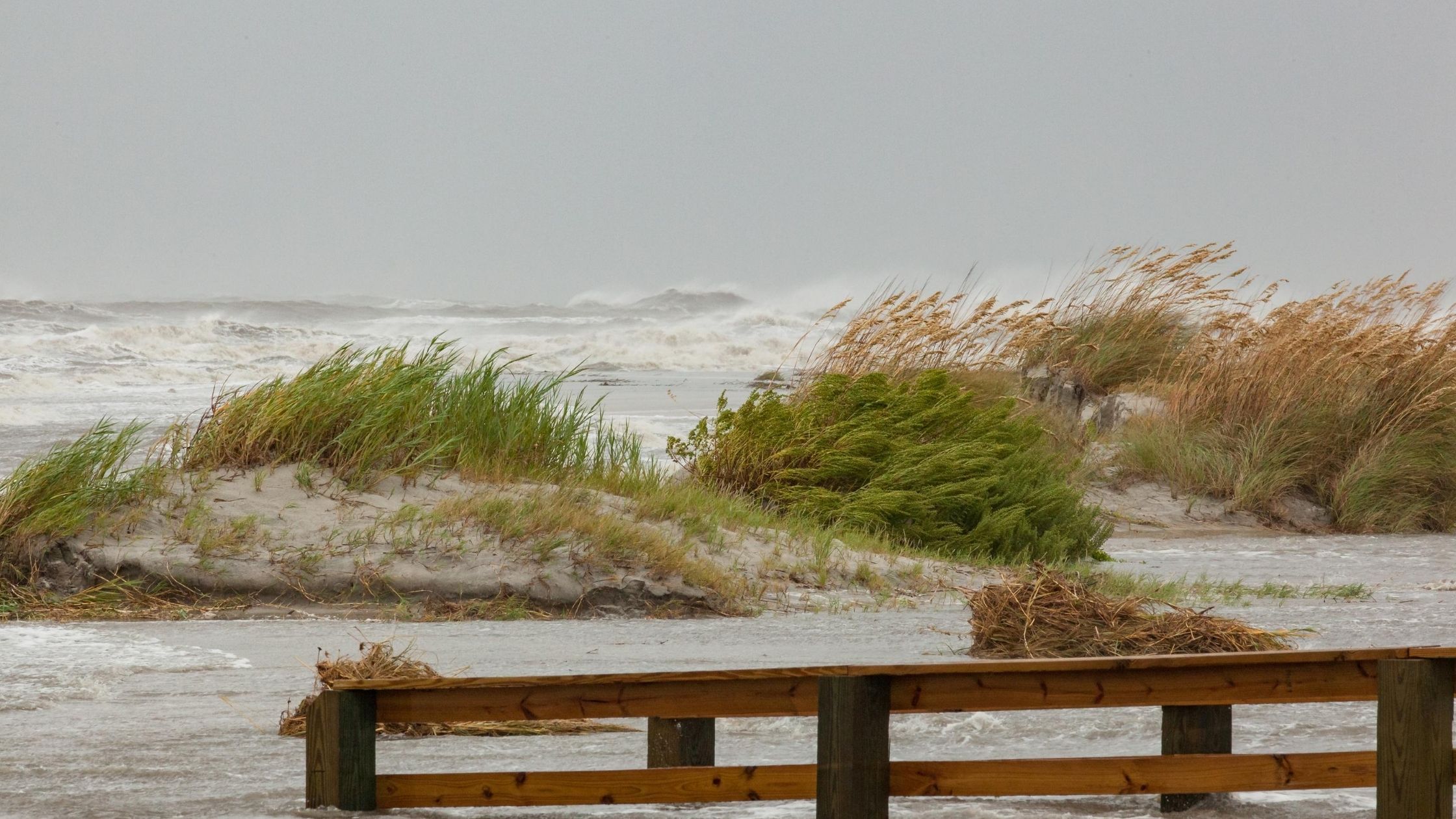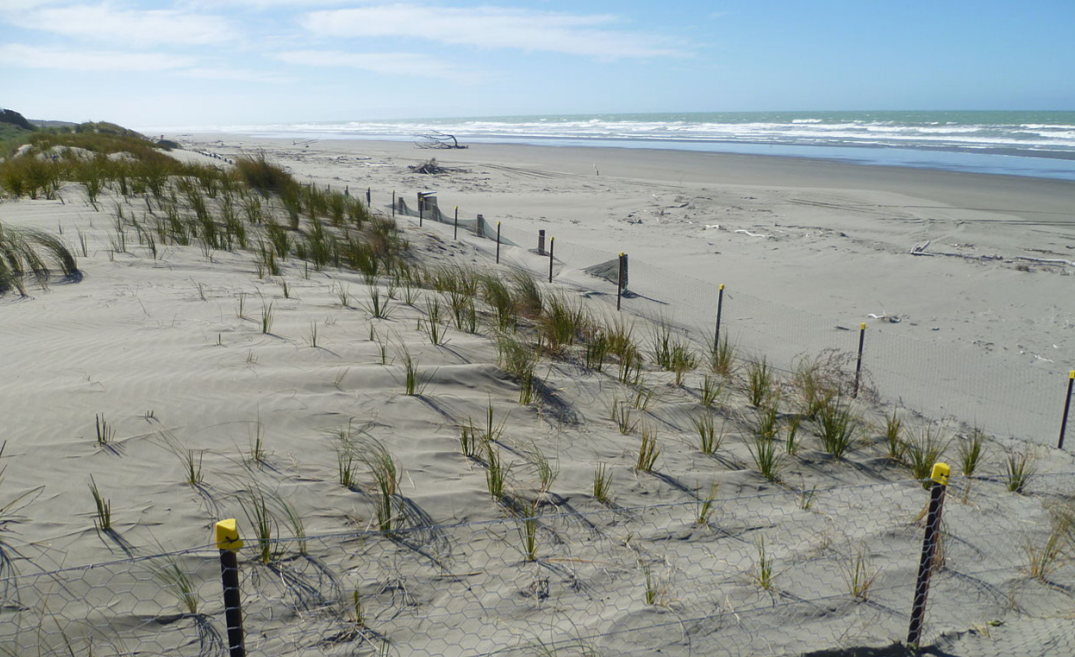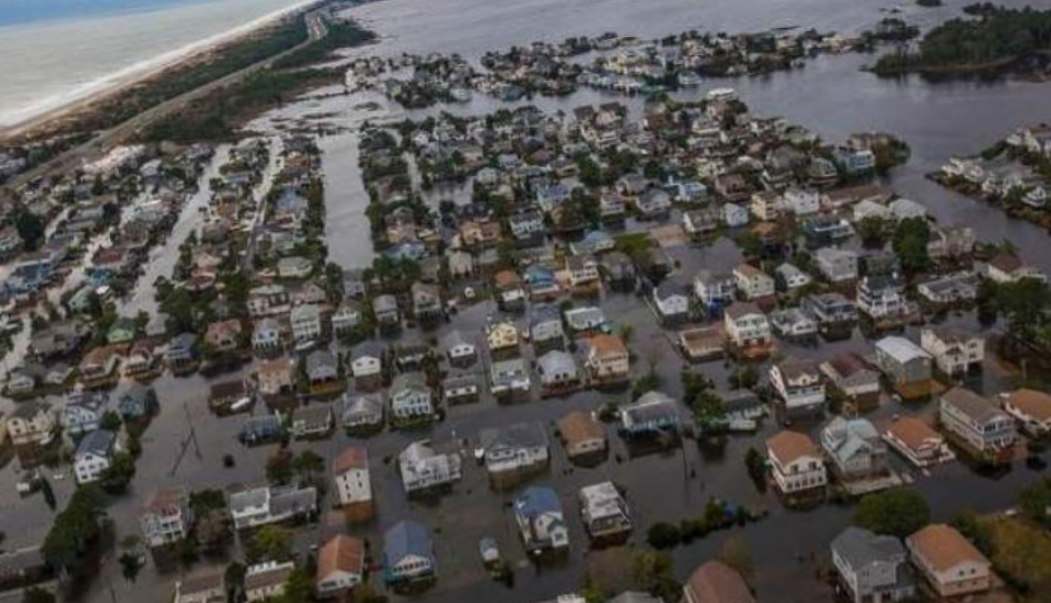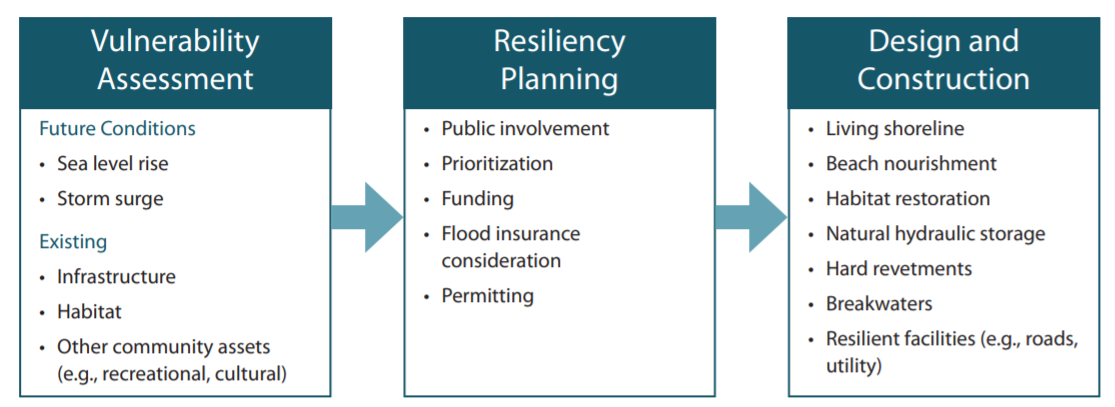Trends in Coastal Hazards Analysis and Adaptation Processes
Coastal areas are highly dynamic systems whose habitats may be threatened by a variety of factors. Especially when faced with extreme weather and water circumstances, these threats are considered coastal hazards. These include sea level change, winds, waves and currents, river runoff, sediment supply and transport, vertical land motions, and land use.

Dune Flooding Along Gulf Coast
From natural hazards such as extreme weather and climate change to impacts of human activities such as urbanization and pollution, these factors can increase the risk of flooding and shoreline erosion. To better understand these changes impacting world coastal zones, observations and analysis of various types must be collected and analyzed to provide better project implementation and engineering solutions for coastal resiliency.
Coastal Hazards Analysis and Adaptation Planning
A major challenge for developing long-term solutions promoting coastal resiliency is balancing community and commercial values and interests with appropriate strategies for improved shoreline protection. Depending on the timescale of processes acting in coastal zones (from episodic extremal events to long-term sea level change), different types of analyses are required to monitor and understand the response to various coastal hazards.

Vegetated Dune as Resilient Coastal Hazard Mitigation Solution
Preparing for the full spectrum of threats facing coastal communities includes evaluating and modeling the nearshore marine environment, implementing appropriate shoreline protection projects, evaluating sea level change impacts, and constructing resilient and sustainable coastal protection and restoration projects.
The steps involved in the evaluation process include:
- Description of local and regional coastal and environmental processes
- Identification of hazards at the project site, including extreme tides and flooding, size and intensity of storms, storm wind-waves and wave runup, and background and episodic shoreline erosion
- Identification of potential future hazards at the project site based on local predicted sea level change estimates and evaluating the corresponding increased risk
- Evaluation of risks to minimize impacts and develop adaptation strategies for projects or portions of the project found to be vulnerable to coastal hazards, both existing and future (potential)
Sea Level Change Vulnerability Analysis
Coastal zones are under serious threat due to extreme events such as flooding, increased salinity in estuaries and of coastal aquifers, and shoreline erosion. These hazards are expected to increase due to the combined effects of climate change and sea level change.
Anchor QEA recently worked on an analysis for a densely populated coastal community located on the East Coast, where its geography and elevation made it vulnerable to increased sea level, as well as climate change-induced increases in the strength, intensity, and frequency of coastal storms. The community periodically experienced tidal flooding and ocean over–wash flooding during the worst coastal storm events, overtopping local roads and flooding most homes.

Flooded East Coast Community That Is Vulnerable to Sea Level Change
Historical data from a tidal gage indicated that the canal tides have increased 5.1 inches over the last 14 years (0.36 inch per year, or a predicted rise of 3 feet during a 100-year period). If the sea level rises 2.6 feet, the town would experience flooding, leading to Anchor QEA’s development of a Comprehensive Sea Level Rise Adaptation Plan to span a time frame of 50 to 100 years to address both tidal flooding and storm-induced flooding. In order to protect similar communities from future flooding crises, planning and management are essential to protecting coastal areas that are particularly vulnerable to sea level change.
Climate Change Adaptation Process
Predicted climate change is adding an extra risk factor to coastal areas. In general, the natural dynamics that shape coastlines have been relatively stable and predictable over the last few centuries; however, rapid change is now expected in shoreline processes as sea levels rise, ocean temperature and acidity increase, and storm intensity and precipitation/runoff patterns adversely impact the coastal zone.

Rock Erosion Caused by Waves on the Texas Coast
For example, increasingly extreme shore currents, tides, sea level rise, and high winds have made erosion a major coastline hazard and a primary concern to be identified, evaluated, analyzed, and monitored. To better protect communities, it is necessary to consider how different coastal environments will respond to the predicted climate change and take the expected future coastal hazards into account during the coastal planning and engineering design processes.
Anchor QEA developed a vulnerability assessment approach to develop climate change scenarios for inundation analysis for various projects across the country. Inundation is the intentional flooding of land for management purposes and is typically estimated based on future climate change effects on global sea level, local sea level change rates extrapolated from historical tide gage data, and storm surges. A GIS database is used to support the analysis, including extensive infrastructure engineering details, with an emphasis on coastal protection structures and drainage systems.

The vulnerability assessment includes a risk analysis, which will direct focus on the highest–risk areas for adaptation planning. Each project scope would include a prioritized list of adaptation alternatives with preliminary costing. It is crucial for the success of the project to integrate the vulnerability assessment into long-term planning goals and focus on development options for the waterfront that improve coastal economic and environmental sustainability and resiliency.
Ultimately, nearshore coastal environments present unique challenges and require engineers to help clients refine their project objectives while working within the high variability of natural conditions to effectively understand the changes affecting coastal zones. Evaluating and modeling nearshore marine environments, developing coastal protection projects, and constructing coastal restoration projects are crucial in reducing hazards to these coastal areas and improving coastal resiliency.

